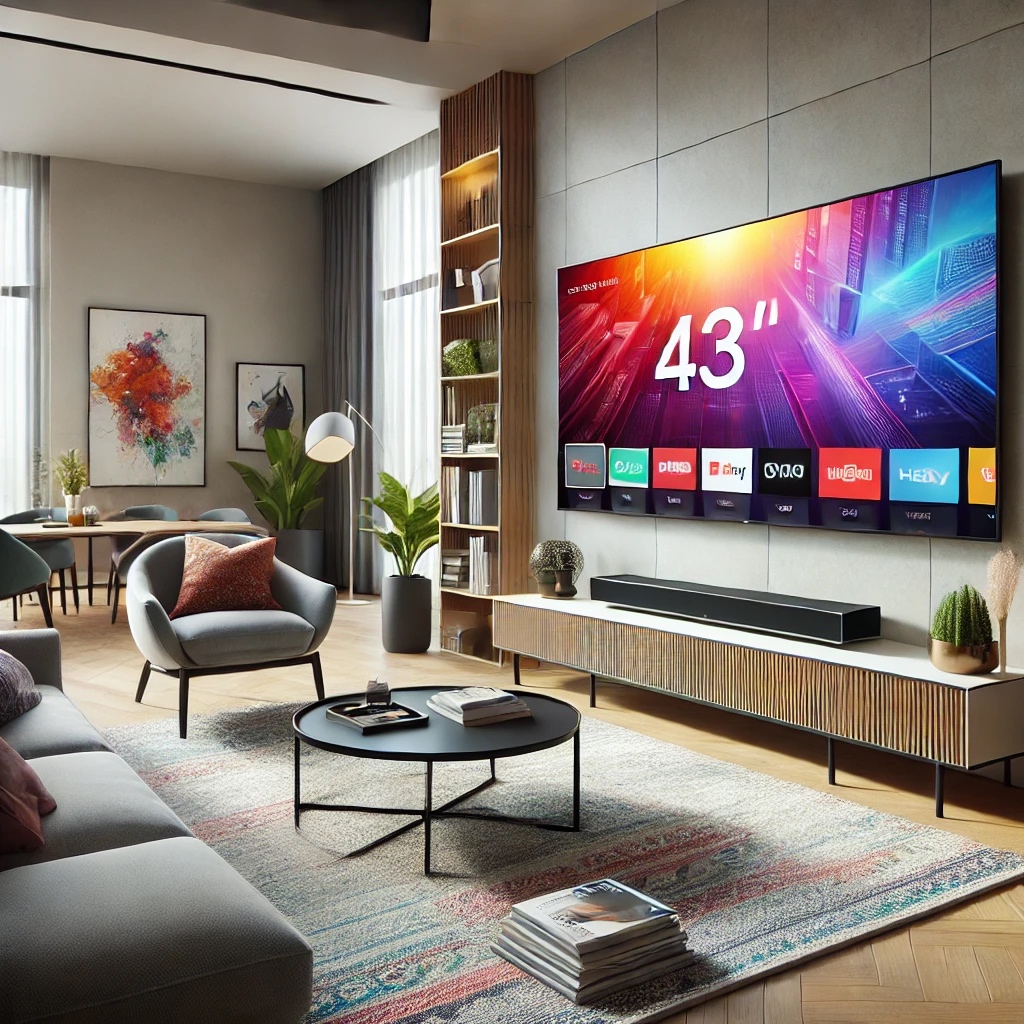Last updated on
Discover the dimensions and space requirements for a 65-inch TV in this quick guide.
Key takeaways:
- A 65-inch TV typically has a width of around 57 inches and a height of around 32 inches.
- Thinner bezels in newer models can reduce the overall size of the TV.
- A 65-inch TV is ideal for larger living spaces with a viewing distance that can accommodate its grand scale.
- Different display technologies, such as LCD, LED, QLED, and OLED, offer distinct advantages and suit different viewing preferences.
- LCD technology is energy-efficient but may have poorer contrast ratios and limited viewing angles compared to OLED or QLED displays.
Dimensions and Viewing Area of a 65-Inch TV
Understanding how a 65-inch TV fits into your space requires knowing its actual dimensions. Typically, this measurement refers to the diagonal length of the screen, stretching from one corner to the opposite corner. Therefore, the screen length doesn’t directly inform you about the TV’s width or height, which are crucial when considering placement.
For a typical 65-inch TV, the width usually ranges around 57 inches (145 cm), while the height hovers near 32 inches (81 cm), excluding any stand or mount. However, remember that the bezel—that thin frame surrounding the screen—can also impact the total size. Thinner bezels found in newer models can reduce the overall dimensions, making the TV appear less obtrusive in a room.
Vital for an immersive experience is the TV’s viewing area, which is significantly larger than that of smaller models. This effectively makes a 65-inch TV a great choice for larger living spaces where the viewing distance can accommodate its grand scale, providing a cinematic feel. Essentially, more screen real estate enhances viewer engagement, making every movie or game visually impactful.
Display Technologies in a 65-Inch TV
LCD, or Liquid Crystal Display, technology uses a backlight to illuminate the pixels, making it cost-effective but often falling short in contrast levels when compared to more advanced technologies.
LED TVs improve upon LCD designs by using Light Emitting Diodes for backlighting, which allows for better brightness and energy efficiency. Variants like Full-Array LED provide superior contrast by lighting up specific areas of the screen independently.
QLED, standing for Quantum-dot Light Emitting Diode, pushes LED technology further by employing quantum dots that enhance the vibrancy and range of colors displayed. This makes QLEDs a favored choice for viewers keen on vivid, cinematic color experiences.
OLED, or Organic Light Emitting Diode, represents a significant advancement wherein each pixel emits its own light, allowing for true blacks and outstanding contrast. The absence of a backlight also allows OLED screens to be extraordinarily thin and flexible in design.
Each technology offers distinct advantages and suits different viewing preferences, whether you prioritize color accuracy, contrast ratios, or energy consumption. Understanding these can help you align your choice with your specific viewing needs.
LCD
LCD stands for Liquid Crystal Display. This type of screen features a series of crystals that are sandwiched between two layers of glass. When electricity passes through these crystals, they align to either block or allow light to pass through, which creates the image on the screen. This is why LCDs require a separate backlight, often provided by fluorescent or LED lights, to be visible.
One of the benefits of LCD technology is its energy efficiency compared to older technologies like plasma screens, as it uses less power to operate, particularly when LED backlights are utilized. Additionally, LCD TVs are available in a wide range of sizes, including the popular 65-inch, making them versatile for various room sizes and viewing needs.
However, LCDs can sometimes suffer from poorer contrast ratios and less effective black levels than OLED or QLED displays. This can impact the viewing experience in very dark or very bright scenes. Moreover, viewing angles can also be limited, meaning the colors might change or fade if you’re not sitting directly in front of the TV.

